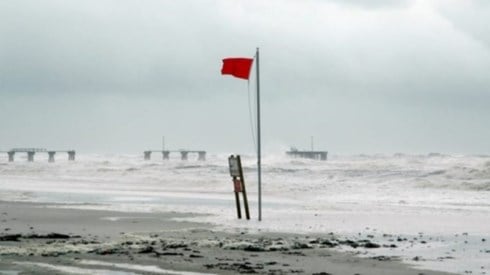As Risks Evolve and Increase, Protection Gaps Pose a Major Challenge

March 20, 2023

As the world experiences uncertain times that bring higher levels of risks, organizations and individuals are experiencing protection gaps that represent a major challenge to well-being and economic security, a new report suggests.
"These protection gaps are driven by supply-side factors (e.g., insufficient protection from governments and insurers) and demand-side factors (e.g., lack of mitigation or adaptation efforts, individuals not seeking protection due to spending preferences, unaffordability or lack of risk awareness)," the report from the Global Federation of Insurance Associations (GFIA) says.
The March 14, 2023, report, Global Protection Gaps and Recommendations for Bridging Them, notes the regular role of the insurance industry in helping organizations and individuals address risks.
"However, insurers alone cannot address all protection gaps," the report says. "Public stakeholders have a vital role to play in building appropriate regulatory frameworks or running large-scale public awareness campaigns, enabling private stakeholders to offer their innovative capabilities. Furthermore, some risks are inherently uninsurable by the private sector, making public-sector involvement crucial."
Closing protection gaps, then, must be the shared responsibility of private and public stakeholders, according to the GFIA. Affected organizations and individuals must take prevention measures and obtain insurance coverage. Insurers must participate in the effort through their risk management expertise, modeling capabilities, distribution channels, and partnerships. And public stakeholders must contribute through appropriate policy frameworks, public awareness campaigns, and public-private partnerships.
The GFIA report cites four global megatrends that are affecting protection gaps directly and indirectly, and making it more necessary to address them.
- Technology. Especially through digitization and automation, technology is driving sweeping changes in how business is done and how we connect with one another, the GFIA says. In addition, there has been an exponential increase in the amount of and usage of data. "The resulting interconnected and complex digital world comes with an increasing number of cyber attacks and data breaches—an issue faced by most businesses worldwide," the GFIA report says.
- Climate change. "Climate change is having major, visible effects on human lives and livelihoods, and is expected to increasingly affect entire societies and economies," the report says.
- Increasing demographic and societal change. Factors such as aging populations and the growth of middle classes in emerging market countries are creating a greater need for financial security and insurance, according to the GFIA.
- Macroeconomics and politics. "Macroeconomics and politics accelerate the changes observed in today's world due to multiple, parallel, partly interconnected trends such as inflation, supply-chain disruptions, and the evolution of the globalized world order," the report says.
The GFIA report estimated the size of global protection gaps in four critical areas: pensions, a $1 trillion annual gap; cyber, a $0.9 trillion gap; health, a $0.8 trillion gap; natural catastrophes, $0.1 trillion protection gap.
The protection gaps across those 4 areas total approximately $2.8 billion, the report says, about 3 percent of global gross domestic product. "And this does not even touch on the severe impact on human lives and related suffering," the GFIA says.
Considering the cyber-protection gap, the report notes that while the increasing presence of technology and the rapid growth in the use of data might create opportunities, it has also increased exposure to cyber risks.
As the number, severity, and types of cyber attacks have grown around the world, insurers and private and public stakeholders have begun addressing the need for cyber security and financial protection. "However, the market is still relatively nascent, especially in terms of the evolving regulatory environment and the developing awareness among individuals and organizations of cyber security and prevention measures and in terms of the rapidly evolving nature of both the technological landscape and the nature of the threats (such as the emergence of ransomware attacks in recent years)," the report says.
The GFIA notes that insurers currently cover only about $6 billion in claims annually, with the US the largest cyber-insurance market, responsible for approximately 70 percent of global cyber-gross written premium.
"Although the supply of cyber insurance is expected to grow, it is unlikely that the cyber protection gap will be closed soon due to the small share of insured losses today and the rapid speed of digitization, making businesses increasingly vulnerable to cyber attacks," the GFIA report says. "Furthermore, since they are dependent on the regulatory environment (e.g., incident-reporting standards) and public cyber-security infrastructure, insurers will not be able to narrow the cyber-protection gap alone (particularly for potentially systemic cyber risks), meaning private and public stakeholders need to collaborate to address the fast-growing cyber protection gap."
Both organizations and individuals must seek cyber protection and engage in cyber-risk prevention, the GFIA says.
On the subject of natural catastrophes, the report notes that the last decade has been the costliest in history, with losses holding back economic growth and individuals' well-being.
Natural catastrophe losses have been accelerated by both climate change and development patterns in high-risk areas and are expected to continue growing, the GFIA says.
The GFIA cites several potential levers for closing the natural catastrophe protection gap. One is new distribution models for natural catastrophe insurance being driven by technology that could increase the accessibility of insurance. Another lever is reducing losses through prevention measures such as land-use or building codes.
Other levers could include government-backed programs, public-private partnerships, mandatory contributions to natural catastrophe funds, or pooling solutions to alleviate the financial burden on governments and speed up economic recovery from natural catastrophe events, the GFIA report says.
Greater access to reinsurance markets to reduce geographic concentrations of natural catastrophe risks could also help reduce the natural catastrophe protection gap, the report says, creating international risk diversification that could help create more resilient (re)insurance portfolios.
March 20, 2023






